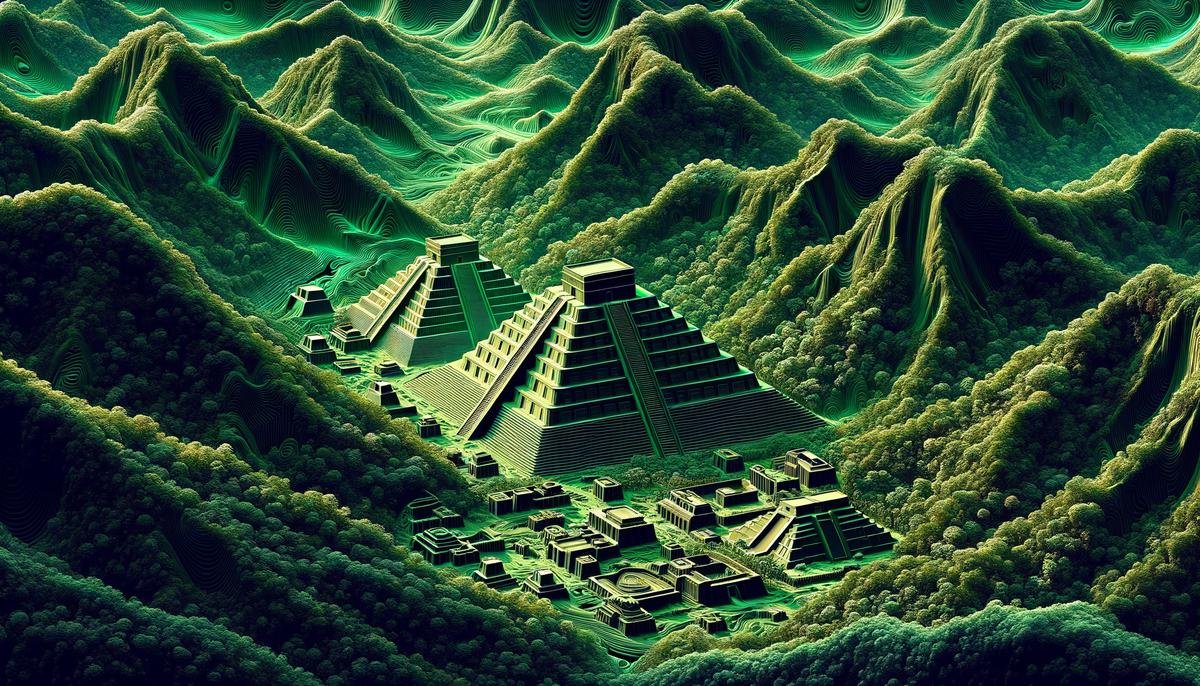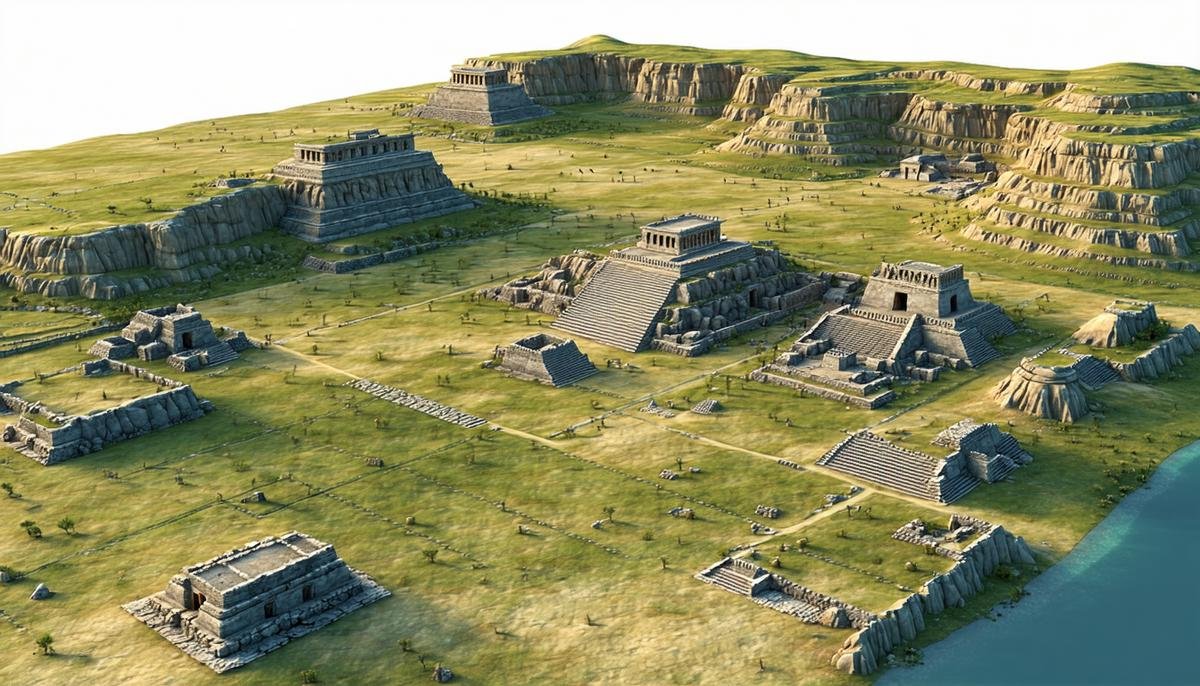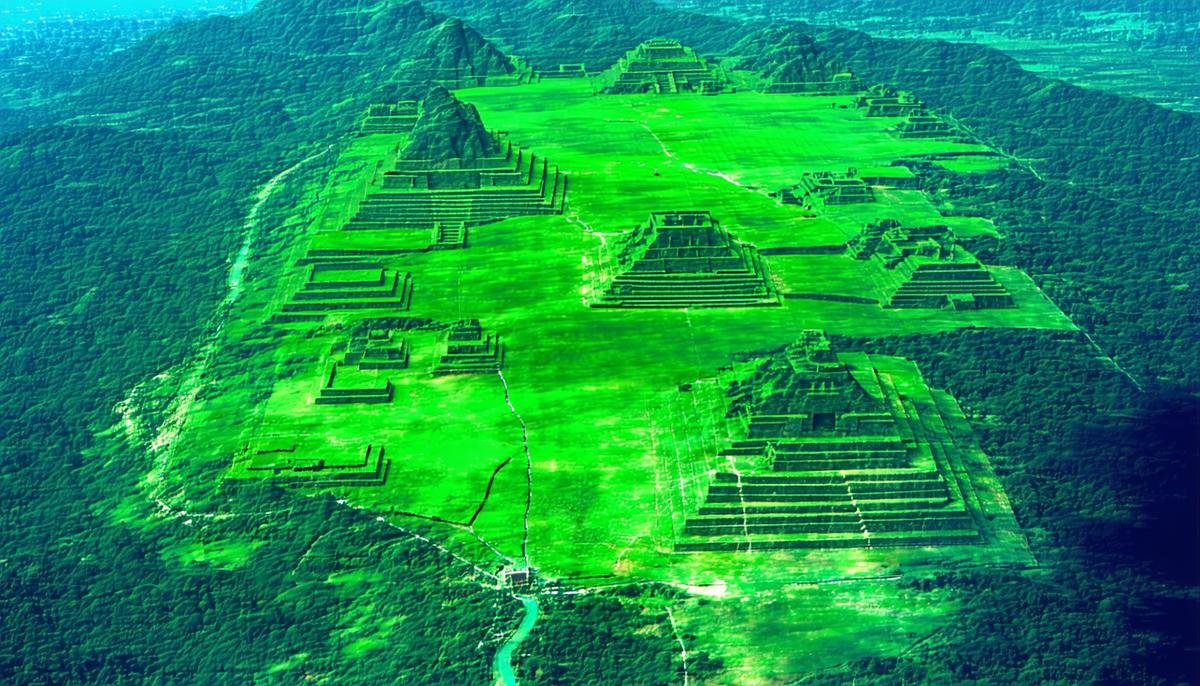AI-Powered Site Detection
Machine learning algorithms are revolutionizing modern archaeology. Traditionally, archaeologists relied on walking surveys and manual aerial photograph analysis. Now, machine learning uses satellite imagery and LiDAR data to find potential sites with high accuracy.
LiDAR (Light Detection and Ranging) allows archaeologists to see beneath forest canopies. In the Yucatan Peninsula, machine learning analyzed LiDAR data to map over 60,000 undiscovered Maya structures hidden by jungle.
These algorithms are trained on datasets of known archaeological sites, enabling them to recognize patterns indicative of human-made structures. This technology is particularly useful in regions where manual surveys are impractical.
Machine learning guides archaeologists to promising sites, reducing the need for blind exploration. It also opens up new frontiers by allowing the examination of remote and challenging terrains from above.

Artifact Analysis and Classification
AI has also revolutionized artifact analysis and classification. Computer vision algorithms can process vast numbers of artifacts, recognizing subtle differences in materials, form, and design.
For example, AI can distinguish between pottery fragments from different regions or time periods. This technology accelerates cataloging and uncovers broader patterns that contextualize trade routes, cultural exchanges, and ancient daily life.
AI's ability to spot recurring motifs across time and space helps map cultural interconnections, challenging previous understandings of ancient civilizations. Projects like Arch-I-Scan use machine learning to analyze pottery fragments, providing new insights into economic exchange patterns in the Roman Empire.
This partnership between AI and archaeology is redefining the field, ensuring that no significant detail goes unnoticed and altering the trajectory of archaeological discovery.
Predictive Modeling in Archaeology
Predictive modeling using AI has shifted how archaeologists approach fieldwork. By analyzing data from topographical maps, climatic records, and historical texts, AI can predict the location of undiscovered sites and reconstruct ancient landscapes.
These algorithms recognize site-friendly characteristics and guide archaeologists to focus their attention more effectively. This approach extends research possibilities and offers insights that might have been impossible without intelligent guidance.
AI-powered predictive modeling also facilitates the reconstruction of ancient landscapes, piecing together data about historical climates, vegetation, and topography. This helps archaeologists visualize the world as it once was, revealing long-vanished rivers or forests.
By combining AI techniques with traditional archaeological methods, researchers can strategize with greater precision, maximizing resources and uncovering the remnants of past civilizations more effectively.

AI in Remote Sensing
The integration of AI with remote sensing technology, particularly LiDAR, has further advanced archaeological discovery. AI processes LiDAR data to reveal hidden structures and forgotten cities from aerial views.
In Guatemala's Petén forest, AI analysis of LiDAR data uncovered a vast network of Maya cities, fortifications, and raised highways. This discovery challenged previous estimates of Maya population and urban reach.
AI can process millions of data points from LiDAR, recognizing patterns and outlining structures that might escape human observation. This capability shifts our understanding of ancient worlds, revealing patterns in:
- Societal hierarchies
- Technological innovations
- Human occupancy over time
With AI-powered remote sensing, dense forests, expansive deserts, and rugged terrain are no longer obstacles to archaeological exploration. Instead, they become opportunities for discovery, where AI and remote sensing collaborate to unearth untold stories of human civilizations.

Deciphering Ancient Texts with AI
AI, equipped with neural networks, is proving invaluable in decoding ancient languages and scripts. These networks, trained on vast datasets of known scripts and languages, can recognize syntax, grammar, and stylistic nuances.
Tools like the Pythia system have been developed to reconstruct ancient Greek texts. Through pattern recognition, Pythia proposes plausible reconstructions for missing parts of ancient writings.
Neural networks can also identify subtle linguistic parallels that hint at broader historical narratives, such as:
- Trade routes
- Power shifts
- Cultural interactions evidenced by borrowed phrases
AI's role in virtual restoration is particularly significant for damaged inscriptions. Tools like DeepMind's Ithaca can predict missing words and possible context with high accuracy, pushing the boundaries of reconstructive philology.
By applying these neural networks, we gain a deeper understanding of our ancient predecessors, allowing the voices of history to speak once more through a digital interpreter.
As AI continues to reshape archaeology, it bridges past and present, offering new insights into ancient civilizations. By integrating advanced technology with traditional methods, we gain a clearer understanding of history's complexity, allowing us to appreciate the depth of human heritage.
- Francis D, et al. Advanced Image Processing and Machine Learning Techniques for the Detection and Prediction of Archaeological Sites in the UAE. Geosciences. 2023;13(6):171.
- Yamagata University. AI discovers new Nazca geoglyphs. Nature. 2023;612(7940):407.
- Thomas H. The role of AI in archaeological research. Journal of Archaeological Science. 2022;140:105550.



